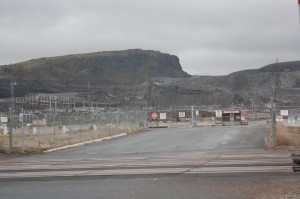“This is an issue that can unite the Tea Party and Occupy Wall Street.”-Sherrod Brown, U.S. Senator from Ohio
Lies, scandals, cover ups, all part of the “too big to fail’s” plan to squeeze the United States dry. Now there’s proof!
Bloomberg Markets magazine has gotten a hold of a 29,000(!) page document, that shows just how much the big banks lied and cheated to the tune of U.S.$7.77 trillion, and that’s not counting the taxpayer funded bailouts!
The bottom line is everybody close to the process lied like crazy.”-Naked Capitalism
Ever since 2007, when the Federal Reserve (a privately run bank) began bailing out the “too big to fail” banks, like Bank of America, the exact amount of the bail outs had been kept secret. Ben Bernanke even said it was because if the public knew how much it really cost it would cause more problems. He’s right!
While the average American in the United States lost their credit, lost their home, and lost their job, Corporate America got a $7.77 trillion bailout from the Federal Reserve. That’s a record! And that doesn’t even count the taxpayer funded bail outs!!!
By the way, average Americans in the United States are still losing their credit, their homes and their jobs, because of bailed out Corporate America!!!
Here’s some more interesting facts about the Federal Reserve bailouts:
1; On December 5, 2008, a record $1.2 trillion was issued on one day!!!
2; The Federal Reserve actually set up the supposed bail out “loans” so that some members of Corporate America made a profit off of paying back those loans! How would you like to be paid for paying back your loans? Corporate America made an estimated $13 billion off some of the bail out loans!
3; Citigroup made the most money off of the Federal Reserve loans, to the tune of $1.8 billion!
4; In fact the top U.S. banks (JPMorgan, Bank of America, Citigroup, Wells Fargo & Co., Goldman Sachs Group Inc. and Morgan Stanley) used the bail out loans to increase their power. By September 2011, their combined assets had increased to $9.5 trillion!!!
5; Most of these bail out loans were issued when the “too big to fail” banks (case in point Bank of America and JP Morgan Chase & Company) were telling their stockholders that they were in no trouble at all!
6; Most of these bail out loans were issued at the same time that the government was giving away taxpayer dollars to save Corporate America! Treasury Department boss Timothy Geithner was well aware of how much money the Federal Reserve was loaning to the “too big to fail’s”!
7; The U.S. Treasury Department’s taxpayer funded TARP program cost a record $700 billion, but that is now dwarfed by the newly revealed Federal Reserve bail outs.
8; The six biggest U.S. banks, got $160 billion of taxpayer TARP funds, and, as much as $460 billion from the Federal Reserve!
Bloomberg got the 29,000 page document after winning a lawsuit (amazingly) against the Federal Reserve, and the country’s biggest group of banks, know as the Clearing House Association.
What this proves is that Corporate America is one big ass FAIL!!! Either they were in the financial hole and really did need the bail outs, which means they had already failed as Capitalist Captains of Industry, or, they were not in the hole, as they repeatedly told their stockholders, and they just pulled off the biggest scam in world history!!!
The result is that the Untied States is now toast: “…we’re absolutely, totally, 100% not prepared for another financial crisis.”-Ted Kaufman, former U.S. Senator from Delaware
Ron Paul is right!!!
